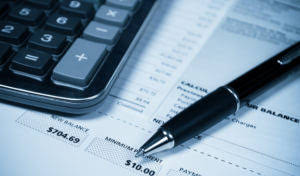Content

When you create an allowance for doubtful accounts, you must record the amount on your business balance sheet. You need to provide proof like call/email records proving that you tried to call the customer or provide easier repayment terms. When the IRS is convinced regarding your https://www.bookstime.com/, you are authorized to write off the debt.
- Because it is an estimation, it means the exact account that is uncollectible is not yet known.
- For this reason, a reasonable estimate of the provision must be made in order to fairly and accurately present the financial statements for a given period.
- One is to calculate it as a percentage of sales, based on historical results.
- The table below shows how a company would use the accounts receivable aging method to estimate bad debts.
- No matter which calculation method is used, it must be updated in each successive month to incorporate any changes in the underlying receivable information.
If estimates fail to match actual bad debts, the percentage rate used to estimate bad debts is adjusted on future estimates. The matching principle of accounting calls for revenues and expenses to be recorded in the period in which they are incurred. When a sale is made on account, revenue is recorded along with account receivable.
Join Over 140,000 Fellow Entrepreneurs Who Receive Expert Advice For Their Small Business Finances
In this method, accounts are written off as a loss once they are determined to be uncollectible. Because this method does not adhere to the matching principle, it is a less acceptable accounting method. Accounts receivable record purchases and transactions that have not yet been paid for by the customer. They are considered an asset because they are a financial resource that can be converted to cash in the near future, once the customer has paid. BlackLine and our ecosystem of software and cloud partners work together to transform our joint customers’ finance and accounting processes.
- Making a bad debt expense journal entry is an adjustment to your accounting for doubtful debt.
- Since our founding in 2001, BlackLine has become a leading provider of cloud software that automates and controls critical accounting processes.
- Notice they did not post the credit side of the entry to Accounts Receivable because the subsidiary account always, always, always has to agree with the control account.
- Treating chargebacks as bad debt expenses, and accounting for them in a way that puts their impact on your revenue into context, can help you manage them more effectively.
- When a company provides goods or services for credit, it allows the customer some time to pay.
This percentage is calculated by dividing your past bad debts by your past sales. Bad debt expenses can bring significant losses to a business, especially those with a large portion of credit sales. However, tracking them paints a clear picture of your cash flow and financial position. Bad debt expenses are the part of accounts receivable that a company considers non-collectible.
Allowance For Bad Debts
Bad debt expense is used to reflect receivables that a company will be unable to collect. Accounts uncollectible are loans, receivables, or other debts that have virtually no chance of being paid, due to a variety of reasons.
Let’s consider a situation where BWW had a $20,000 debit balance from the previous period. For this reason, they are considered a “short-term asset” which refers to any financial resource that can be converted to cash in one year or less. To truly transform your finance and accounting processes, you need the guidance of a trusted partner. Our proven approach has helped thousands of customers identify and address bottlenecks to free up capacity, strengthen controls, and deliver measurable results. To sustain timely performance of daily activities, banking and financial services organizations are turning to modern accounting and finance practices. Financial StatementFinancial statements are written reports prepared by a company’s management to present the company’s financial affairs over a given period .
What Is The Benefit Of Bad Debt Protection?
Companies come to BlackLine because their traditional manual accounting processes are not sustainable. We help them move to modern accounting by unifying their data and processes, automating repetitive work, and driving accountability through visibility. Whether you’re new to F&A or an experienced professional, sometimes you need a refresher on common finance and accounting terms and their definitions.

For the allowance method, you should record your estimated bad debts as a contra asset account. If you are wondering, a contra asset account has a negative or zero balance.
Accounting
The understanding is that the couple will make payments each month toward the principal borrowed, plus interest. To record the bad debt expenses, you must debit bad debt expense and a credit allowance for doubtful accounts.
- To account properly for bad debt, the business must record it as an expense.
- Estimated uncollectibles are recorded as an increase to Bad Debts Expense and an increase to Allowance for Doubtful Accounts through an adjusting entry at the end of each period.
- The best alternative to bad debt protection is trade credit insurance, which provides coverage for customer nonpayment in a wide range of circumstances.
- Trade credit insurance provides coverage for a wide range of bad debt-related losses, while also providing businesses with the tools and support to manage their credit and accounts receivable more effectively.
- Notes receivable give the holder a stronger legal claim to assets than accounts receivable.
The doubtful debt reserve holds a sum of money to allow a reduction in the accounts receivable ledger due to non-collection of debts. Once a doubtful debt becomes uncollectable, the amount will be written off. For publicly traded companies following GAAP, or a high volume of sales on credit, the allowance method is used.
Generally Accepted Accounting Principles
The bad debts are the losses that the business suffers because it did not receive immediate payment for the sold goods and provided services. It’s recorded in the financial statements as a provision for credit losses. A business may calculate its estimate for bad debt allowance in one of two ways. According to the sales method, the business will take a percentage that reflects its historical experience with bad debt and multiply this by its totals sales or accounts receivable. Although it is based on an estimate, this method allows a business to align bad debt to the reporting period in which the sale occurs. This is in accordance with the matching principle, and therefore, it is considered a more accurate form of accounting bad debt expenses.

This may occur because the customer has no money and becomes bankrupt, or they simply disappear. The term ”Bad Debt” is used to describe the situation when a business is unable to obtain payment for an Bad Debt Expense amount of money that is legally and properly owed to it. Upon receipt of credit card sales slips from a retailer, the bank that issued the card immediately adds the amount to the seller’s bank balance.
The whole seller recommends the treatment to be done in books of accounts if he opts for the allowance method for recognizing bad debts. If you do a lot of business on credit, you might want to account for your bad debts ahead of time using the allowance method. The direct write-off method involves writing off a bad debt expense directly against the corresponding receivable account. Therefore, under the direct write-off method, a specific dollar amount from a customer account will be written off as a bad debt expense.
If you use double-entry accounting, you also record the amount of money customers owe you. To protect your business, you can create an allowance for doubtful accounts.

As stated above, they can only be written off against tax capital, or income, but they are limited to a deduction of $3,000 per year. Any loss above that can be carried over to the following years at the same amount. Most owners of junior (2nd, 3rd, etc.) fall into this when the 1st mortgage forecloses with no equity remaining to pay on the junior liens. For many business owners, it can be difficult to estimate your bad debt reserve. Instead of doing one calculation for the entirety of sales, you age your accounts receivables.
On top of deeming your doubtful debt uncollectible, you need to have proof that it is business-related. Business bad debt means that the loss was accrued concerning your business or trade, with enforceable payment terms.
Doubtful Debt Reserve
Delays recognition of bad debt until the specific customer accounts receivable is identified. Once this account is identified as uncollectible, the company will record a reduction to the customer’s accounts receivable and an increase to bad debt expense for the exact amount uncollectible. The percentage of sales of estimating bad debts involves determining the percentage of total credit sales that is uncollectible.
How To Directly Write Off Your Accounts Receivable
Because you set it up ahead of time, your allowance for bad debts will always be an estimate. Estimating your bad debts usually involves some form of the percentage of bad debt formula, which is just your past bad debts divided by your past credit sales. You only have to record bad debt expenses if you use accrual accounting principles. Bad debts are still bad if you use cash accounting principles, but because you never recorded the bad debt as revenue in the first place, there’s no income to “reverse” using a bad debt expense transaction. Therefore, the business would credit accounts receivable of $10,000 and debit bad debt expense of $10,000. If the customer is able to pay a partial amount of the balance (say $5,000), it will debit cash of $5,000, debit bad debt expense of $5,000, and credit accounts receivable of $10,000.